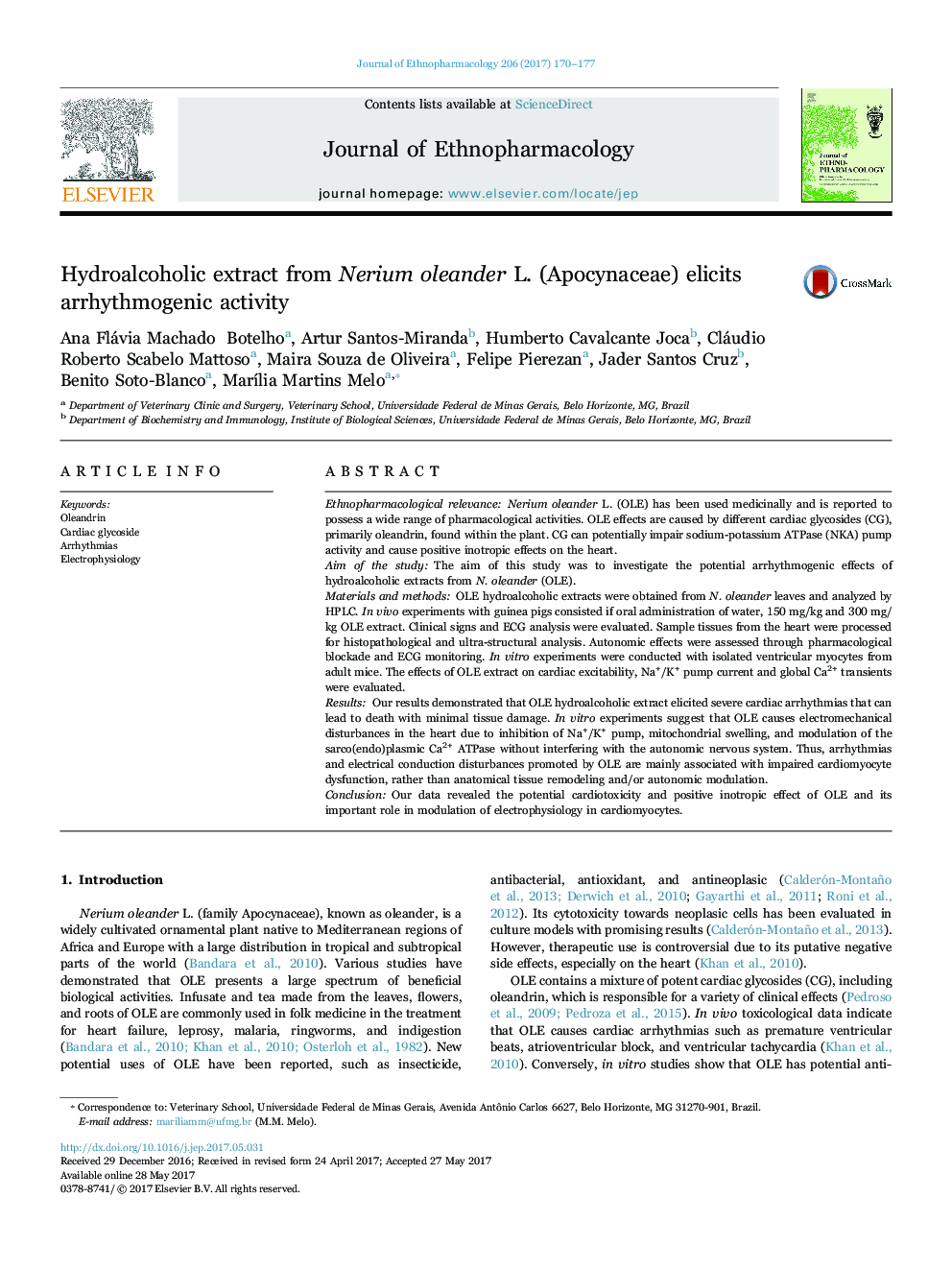| کد مقاله | کد نشریه | سال انتشار | مقاله انگلیسی | نسخه تمام متن |
|---|---|---|---|---|
| 5556208 | 1560356 | 2017 | 8 صفحه PDF | دانلود رایگان |

Ethnopharmacological relevanceNerium oleander L. (OLE) has been used medicinally and is reported to possess a wide range of pharmacological activities. OLE effects are caused by different cardiac glycosides (CG), primarily oleandrin, found within the plant. CG can potentially impair sodium-potassium ATPase (NKA) pump activity and cause positive inotropic effects on the heart.Aim of the studyThe aim of this study was to investigate the potential arrhythmogenic effects of hydroalcoholic extracts from N. oleander (OLE).Materials and methodsOLE hydroalcoholic extracts were obtained from N. oleander leaves and analyzed by HPLC. In vivo experiments with guinea pigs consisted if oral administration of water, 150Â mg/kg and 300Â mg/kg OLE extract. Clinical signs and ECG analysis were evaluated. Sample tissues from the heart were processed for histopathological and ultra-structural analysis. Autonomic effects were assessed through pharmacological blockade and ECG monitoring. In vitro experiments were conducted with isolated ventricular myocytes from adult mice. The effects of OLE extract on cardiac excitability, Na+/K+ pump current and global Ca2+ transients were evaluated.ResultsOur results demonstrated that OLE hydroalcoholic extract elicited severe cardiac arrhythmias that can lead to death with minimal tissue damage. In vitro experiments suggest that OLE causes electromechanical disturbances in the heart due to inhibition of Na+/K+ pump, mitochondrial swelling, and modulation of the sarco(endo)plasmic Ca2+ ATPase without interfering with the autonomic nervous system. Thus, arrhythmias and electrical conduction disturbances promoted by OLE are mainly associated with impaired cardiomyocyte dysfunction, rather than anatomical tissue remodeling and/or autonomic modulation.ConclusionOur data revealed the potential cardiotoxicity and positive inotropic effect of OLE and its important role in modulation of electrophysiology in cardiomyocytes.
192
Journal: Journal of Ethnopharmacology - Volume 206, 12 July 2017, Pages 170-177